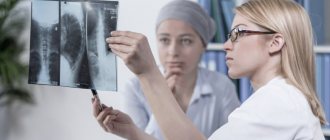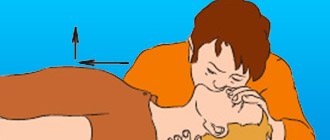The IMMA clinic provides medical services and helps get rid of many diseases, including diseases of the gastrointestinal tract. To do this, we use modern diagnostic equipment, which helps to quickly make an accurate diagnosis, and we also cooperate with experienced and professional doctors who will not only promptly identify a functional intestinal disorder, but also relieve a dangerous illness.
What it is?
Functional gastrointestinal disorder is a separate type of pathology associated with disturbances in the process of digestion of food. It can appear in almost anyone, regardless of age or gender.
The reasons why the disease occurs are divided into two categories: biological predisposition and environmental features leading to this pathology. The latter include stress, poor nutrition and the like.
Symptoms of a functional bowel disorder include:
- Spasms
- Flatulence
- Diarrhea
- Constipation
Often the disease entails the appearance of other, no less acute ailments. Thus, women may experience inflammation of the genitourinary system, and both sexes may develop chronic diseases of the stomach and intestines.
Important! To reduce the risk of developing this disease, it is worth limiting the provoking factors. The latter includes the consumption of spicy, fried or salty foods, it is necessary to eat in small portions, move after eating, and sleep with an elevated headboard.
Diseases of the gastrointestinal tract (GIT)
Diseases of the gastrointestinal tract (GIT): how to recognize the enemy in time?
Digestion involves a dozen organs that break down food, absorb nutrients and remove excess waste from the body. This is a “full cycle” system - from the absorption of food products and their processing to the removal of undigested residues. It is extremely important that each of its elements works smoothly and does not fail.
How does the human gastrointestinal tract work?
The digestion process is somewhat reminiscent of going down a slide in a water park. The beginning of the journey is the oral cavity , where food is chewed, crushed, mixed with saliva and turned into a soft food bolus.
This is interesting
The mucous membrane of the oral cavity has receptors that help recognize the taste, temperature and consistency of food. These sensors transmit signals to the brain, which activates the salivary, fundic and pancreatic glands.
Next comes the pharynx , a funnel-shaped canal in which the digestive and respiratory tracts intersect.
The journey of food continues in the esophagus - a cylindrical muscular tube 22–25 cm long. The upper and lower esophageal sphincters at the ends serve as valves that prevent food from returning back into the oral cavity.
The stomach is a pouch-shaped muscular organ that connects the esophagus to the duodenum (duodenum). It is like a cauldron in which food is accumulated, mixed into a paste and digested by gastric juices. Stomach juice consists of enzymes and hydrochloric acid, due to which it has pronounced acidity (about 1.5–2.0 pH). Gastric juice breaks down proteins and other chemical compounds, after which they are transported to the small intestine for final digestion and absorption.
The length of the small intestine , consisting of the duodenum, jejunum and ileum and occupying most of the abdominal cavity, is about 4.5 m. The small intestine contains glands that produce intestinal juice for the main digestion of food and absorption of nutrients into the blood.
The large intestine is the lower part of the intestine where water, electrolytes, fiber are absorbed and unusable food residues are formed into feces. The large intestine is 1.5 m long and is divided into the cecum, colon and rectum. The rectum, the final section of the digestive tract, ends in an opening (anus). Serves for the accumulation of feces and bowel movements. This is where the “unprecedented journey” ends - processed food remains leave the body.
Digestion also involves the pancreas, kidneys, adrenal glands, gallbladder and liver.
The pancreas is located in close proximity to the stomach and duodenum. It secretes pancreatic juice, which promotes complete digestion of food and metabolic processes.
The liver takes part in the metabolism of lipids, vitamins, proteins and carbohydrates, synthesizes blood proteins: globulins, albumins and fibrinogen. The organ participates in immunological reactions.
The function of the gallbladder is to store and supply, as needed, concentrated bile, which is constantly produced by liver cells. Bile is directly involved in human digestion and acts as a kind of antibacterial agent.
It is worth mentioning the role of the kidneys and adrenal glands , which belong to the urinary system, in digestion. They process the water coming from the colon, filtering it into what is suitable for the body's needs and into urine, which contains unnecessary impurities and must be excreted.
At each stage of the passage of food through the gastrointestinal tract, failures are possible, leading to incomplete absorption of food, problems with the removal of waste material and threatening the development of gastrointestinal pathologies.
Among the causes of problems with the digestive system, the leading one is poor nutrition, which comes in various forms. This is overeating and eating heavy food, malnutrition and starvation, irregular meals, quick snacks, scarcity and unbalanced diet. The gastrointestinal tract is negatively affected by poorly purified water and harmful food additives.
Other factors: poor environment, stress, harmful working conditions, addictions, congenital predisposition, autoimmune diseases and disruptions in the endocrine system, side effects of drugs (antibiotics, anti-inflammatory, painkillers, hormonal drugs), violation of sanitary standards when preparing and eating food, which can cause infectious diseases and parasites.
Failures in the digestive system negatively affect the entire body, reduce immunity, disrupt metabolism, and lead to deterioration in the appearance of the skin, brittle hair and nails. They are fraught with numbness of the limbs, pain in muscles and bones, and sleep disturbances.
Possible complications for the cardiovascular system: hypertension, arrhythmia, angina pectoris, risk of stroke and heart attack. Against the background of gastrointestinal diseases, anular stomatitis, glossitis, bleeding gums, eczema, and neurodermatitis can develop. In advanced forms of gastrointestinal diseases, damage to the pituitary gland, adrenal glands, gonads, and thyroid gland is possible.
Gastrointestinal diseases: what the statistics say
Diseases of the gastrointestinal tract are among the most common pathologies in the world.
Medical statistics Mortality from gastroenterological causes in Russia ranks third after cardiovascular diseases and cancer and is about 0.08% (80 cases per 100,000 people). An average increase of 0.003% in deaths is recorded annually.
Men are 38% more likely to become victims of gastrointestinal diseases, which is associated with both uncontrolled alcohol consumption and late seeking medical help.
Among deadly gastroenterological diseases, over 45% are liver diseases caused by alcohol. Twice as many men die as women (16:7 ratio). Acute pancreatitis and other diseases of the pancreas are the cause of death in 17% of gastroenterologist patients. Death from peritonitis due to gallbladder rupture is less than 1%.
Lethal intestinal diseases are caused by advanced forms of inflammation and perforations (violation of integrity, formation of holes) in the walls of the small and large intestines. In particular, appendicitis (inflammation of the cecum) is responsible for up to 4% of all deaths associated with the gastrointestinal tract. The same amount is due to infarction (necrosis, necrosis) of the intestine.
Despite its widespread prevalence, gastric and duodenal ulcers are the cause of death in no more than 10% of the gastrointestinal group.
Chronic gastritis . It affects up to 80–90% of patients in the world, which is facilitated by the pathogenic bacterium Helicobacter pylori, which causes inflammation of the gastric mucosa. In developing countries, Helicobacter infection in people over 40 years of age reaches 95%.
In Russia, the presence of Helicobacter pylori in the stomach is noted, according to various sources, in 62–94% of adult patients.
The consequence of gastritis - a stomach ulcer is found in every 15th inhabitant of the Earth. In our country, the statistics are more optimistic - only 1 in 40 Russians is sick. Men get ulcers 2–4 times more often than women.
The prevalence of gastroesophageal reflux disease (GERD) reaches 50% among the adult population. Symptoms of the disease occur equally often in both men and women.
Duodenitis is a common disease of the duodenum, affecting 5–10% of patients. In men, it is diagnosed twice as often due to alcohol abuse and poor lifestyle choices.
Colitis , is also relatively common . The cause of the disease is pathogenic microbes (streptococci, staphylococci, E. coli).
Appendicitis (inflammation of the cecum) occurs in 30% of Russians.
Every tenth man and every fourth woman who complains of abdominal pain is diagnosed with chronic cholecystitis (cholelithiasis).
Dysbiosis is common among children and adults - an imbalance of intestinal microflora, leading to disruption of the digestive system.
Symptoms of the most common gastrointestinal diseases
Typical signs of gastrointestinal pathologies: heartburn (burning sensation from the reflux of stomach contents into the esophagus), flatulence and intestinal stenosis (bloating caused by the accumulation of gases in the intestines), belching (gases escaping from the stomach or esophagus), nausea and vomiting, problems with stool (constipation or diarrhea), bad breath, plaque on the tongue.
Less common: dysphagia (impaired swallowing, accompanied by pain and a feeling of stopping the food bolus), impurities in the stool (blood, mucus, undigested food residues), swelling of the tongue, bitterness in the mouth, itchy skin and other allergic reactions. Diseases of a common pathogenesis have both general and specific symptoms.
Stomach diseases
Pain in the epigastric region and dyspeptic syndrome (sour belching, heartburn, vomiting and nausea) may indicate a number of diseases of the stomach, esophagus and DCP.
With a peptic ulcer , which is a wound in the wall of the duodenum or stomach, there are sharp periodic pains in the left hypochondrium, weakness, diarrhea, vomiting, and bloody impurities in the stool.
Inflammatory processes of the stomach ( gastritis ) and duodenum ( duodenitis ) manifest themselves in a similar way. The diseases are accompanied by acute, aching or nagging pain in the upper abdomen, nausea, vomiting, and problems with bowel movements. Patients experience a feeling of a full stomach and heaviness in the abdomen, even with little food consumption.
A hiatal hernia also causes pain in the epigastric region when changing positions and after eating. It is also possible to experience back pain and girdling pain. 20% of patients (mostly over 60 years of age) experience pain in the heart area due to concomitant cardiac diseases.
The intestines often suffer from inflammatory processes and infectious lesions. Inflammation of the large and small intestines ( enteritis and colitis ) is accompanied by stool upset (up to 15 times a day). During defecation and immediately after it, the patient experiences severe weakness, dizziness, nausea, and a drop in blood pressure. There is bloating, cold sweat, trembling of the limbs, tachycardia, as well as loud rumbling, splashing noise and pain on palpation.
Signs of paraproctitis, or abscess (purulent inflammation) of the rectum are severe pain in the rectum or perineum. As the abscess increases in size, the pain intensifies, the urge to defecate becomes painful, the temperature rises, and chills are possible.
Dysbacteriosis is manifested by abnormal stool, bloating, cramping pain, dyspeptic disorders and allergic reactions (itching and skin rashes).
Hemorrhoids (varicose veins of the rectum) are characterized by bleeding or smearing with blood after defecation, prolapse of hemorrhoids through the anus and pain during bowel movements, which continues for some time (when walking, sitting and lying down).
The symptoms of appendicitis are determined by the patient’s age, the location of the appendix in the abdominal cavity, and the presence of complications. Characterized by a dull pain in the right side, weakness and headache, which may be accompanied by pain in the legs, nausea combined with single vomiting, frequent loose stools, temperature within 38 degrees.
One should not lose sight of one of the most common and yet mysterious pathologies - irritable bowel syndrome (IBS) , accompanied by abdominal cramps, stool problems, and painful bloating. IBS has a negative impact on the entire body: the patient complains of headache, insomnia, increased fatigue, and rapid heartbeat even at complete rest. According to most experts, IBS is of a psychosomatic nature and appears as a result of stress and severe emotional overload. However, to get rid of the problem, it is important not only to achieve peace of mind, but also to apply comprehensive drug treatment. One solution may be to take bismuth preparations, which simultaneously have a bactericidal, anti-inflammatory and protective effect.
Liver diseases
Acute hepatitis C (inflammatory viral damage to the liver) is marked by a whole range of symptoms. Among them: weakness, decreased appetite and performance, sleep disturbance, aversion to food, a feeling of heaviness in the abdomen, pain in large joints, the appearance of a rash, increased body temperature, darkening of urine, yellowing of the skin (hence the popular name for the disease - jaundice).
The first signs of liver cirrhosis are: a feeling of fullness in the abdomen, decreased performance, pain in the right hypochondrium, a feeling of fullness in the stomach, bleeding gums and nosebleeds, fever, flatulence, nausea, vomiting.
Diseases of the gallbladder and biliary tract
Signs of cholecystitis (inflamed gallbladder) are acute pain in the right hypochondrium, bloating, attacks of nausea and vomiting. The pain intensifies with a deep breath while palpating the gallbladder area. Many patients report a slight increase in temperature.
Pancreatic diseases
Patients with pancreatitis often complain of acute abdominal pain, which is accompanied by nausea and vomiting with gastric juice, mucus, bile, etc. There is also bloating, dry mouth, and belching. Blue spots often appear on the left side and in the navel area.
Most common and life-threatening diseases of the gastrointestinal tract are caused by inflammatory processes against the background of a bacterial or viral infection. Digestion is a single interconnected system and diseases of its organs can sequentially develop according to the domino principle. The source of an avalanche of problems is often in the stomach, which we put to the test of strength every day. Therefore, in the treatment of gastrointestinal pathologies, an integrated approach using gastroprotective (protective) and antiseptic gastrointestinal drugs is effective.
Diseases in children
In children, symptoms of functional bowel disorder manifest differently and are stronger. In particular, even the most common diarrhea in children can lead to a serious condition for the child and require hospitalization. If this does not happen, the consequences of diarrhea are still much worse tolerated compared to an adult patient.
In children and adults, damage to the intestines equally strongly affects the functioning of the immune and endocrine systems, which can lead to lethargy, apathy, and frequent colds and other diseases.
Important! In childhood, it is recommended to undergo regular preventive appointments and examinations. Even if they have not yet fully manifested themselves, their detection and elimination at an early stage can seriously make life easier in the future.
Diagnostics
If functional disorders of the gastrointestinal tract acquire chronic forms, it is necessary to conduct an examination by a gastroenterologist, which will help to find out the cause of poor health.
You may also need to consult other specialists. For example, a nutritionist who will help you choose the most suitable diet.
Diagnostics proceeds in several stages. The first is an initial visual examination of the patient and collection of anamnesis.
Then you need to undergo an examination. These include stool and urine analysis, colonoscopy, gastroscopy, abdominal ultrasound, computed tomography and a number of other procedures.
After diagnosis, treatment for functional gastrointestinal disorders is prescribed. Psychotherapists, physiotherapists, endocrinologists, and nutritionists are involved in treatment.
Medicinal methods of treatment of the disease are prescribed, special attention is paid to the rules of food intake, physical activity, work and rest schedule. Only compliance with all these components can guarantee relief from the disease.
What are the general rules of treatment for gastrointestinal problems?
The approach to treating problems with the intestines should be aimed at restoring the normal rhythm of its work.
The main treatments for gastrointestinal problems are healthy eating, diet and physical activity. Following a diet helps restore normal functioning of the gastrointestinal tract, allowing you to prevent or reduce symptoms such as pain and cramps in the abdomen, bowel dysfunction, flatulence (gas formation, bloating and rumbling).
It is worth excluding foods and drinks from your diet that cause increased gas formation5:
- legumes
- fat meat
- semi-finished products, fast food
- strong tea, coffee
- sour juices
- smoked meats, spicy dishes
- canned food
- baked goods, muffins, fresh bread
Advice for those who are just starting to diet.
Full digestion of food requires slow chewing and consumption of small portions of food.
For constipation, it is recommended to consume plant fiber, which stimulates intestinal activity, cleanses its walls of mucus and ensures regular bowel movements. During diarrhea, you should eat foods that slow down the activity of the gastrointestinal tract - foods low in fiber or viscous in structure5.
It is necessary to completely exclude foods that can enhance the effect of fermentation: grapes, pastries, brown bread, bananas, beans. Products that can increase gastric secretion are also prohibited: mushrooms, radishes, radishes, celery, coffee, strong tea and alcohol5. Such restrictions should be introduced until complete recovery, and then periodically, as a preventive measure.
If you have irritable bowels, you should follow a diet5:
- six meals a day and fractional meals
- eating according to a set schedule, without interruptions
- mostly boiled or steamed food
- pureed and mashed dishes should predominate
- drinking a lot of water
There is another diet option for irritable bowel: low-FODMAP. The essence of the diet is to exclude foods with poorly digestible carbohydrates from the diet. More details about the low-FODMAP diet can be found in a separate material.
Frequent indigestion requires an integrated approach and lifestyle adjustments in general. To maintain normal activity of the digestive system, you need to take daily walks or engage in any available sport, even if you don’t feel like it at all. Normal physical activity has a positive effect on the natural increase in contraction of the intestinal walls (peristalsis), helps get rid of diarrhea or constipation, improves skin condition, and strengthens the immune system. Many people have gotten rid of gastrointestinal problems by switching to an active lifestyle.
Prevention and healthy lifestyle
The lifestyle of a modern city dweller can hardly be called healthy or conducive to maintaining good health. That is why preventive measures are recommended.
Moreover, this is true for both children and adults.
To maintain the body in good condition, it is recommended to take care of your diet. Eliminate junk food from it, reduce the amount of fried and salty foods. Try to purchase products from trusted manufacturers and pay attention to the composition.
It is also recommended to move as much as possible. This improves the general condition of the body.











